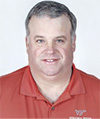When playing farm equipment matchmaker, you may first think about marrying tractors up to implements, and that is a reasonable place to start. In thinking about tractor/implement combinations, power comes to mind quickly, but safety and control also need to be considered.
A 75-horsepower tractor may indeed pull a 30,000-gallon manure tank, but stopping that 30,000-pound load or controlling it going down a steep grade is certain to prove dangerous, if not deadly. As I have written in past Mechanics Corner submissions, if you can’t stop it or steer it, you better not be hooked to it.
Even if your tractor is properly sized to control the implement, there still may be unforeseen issues that arise. For example, is the implement a 540 or 1,000 PTO drive? A larger tractor may not offer a 540 PTO option. If the implement is a 1,000 rpm PTO drive, what size shaft is needed on the tractor – 1 3/8 inch or 1 3/4 inch?
Rear tire size can also cause some hitch issues. Step-up rims have a bell (or spacer) welded into the rim ring to allow a larger-diameter tire to fit a smaller-sized center hub on a tractor. Using a larger tire can help eliminate problems, but it can cause some issues as well.
Larger tires can make hooking up an implement to your three-point hitch impossible without a quick hitch. Keep in mind a taller tire is going to add length to the tractor as well. Depending on the tire and tread configuration, the differences can be extraordinary.
Mismatched equipment does not have to be tractor/implement related. Trying to use implements that do not match each other can be an issue. Nowhere does this show up more than in row-crop situations. While they aren’t as prevalent as they once were, the use of a four-row corn planter and a three-row forage harvester head is just a headache.
No matter how you go about harvesting, there is always a “spare” row that causes problems unless you have planted the rows perfectly. Of course, today’s harvesters use multi-row/multi-crop heads that don’t care how big or small the planter is; however, there are still considerations. If the cutter head isn’t a lot wider than the machine, issues can arise in today’s ultra-narrow row spacing fields.
Corn not gathered by the head can be lodged by the tire of the harvester as it passes by. The outside snoot can also knock stalks down if the planter spacing does not allow it to pass freely.
A major issue in the marriage of equipment systems and modern harvesting can be witnessed at the silo. I don’t think it is any secret a custom harvesting operation wants to harvest crops as quickly as possible.
It also isn’t a stretch to see where a smaller dairy with limited resources could see the justification in hiring a custom harvester to gather in the year’s corn silage. These two scenarios hit head-on when the harvesting operation does not also provide packing at the bunker.
Undersized or understaffed packing equipment that cannot match the amount of material or the speed at which it arrives spells failure in terms of harvesting and storing a top-quality forage for the herd’s future needs.
If you are going to harvest in large volumes, you need to be able to keep the crop spread out and packed with matching speed. Not having a good match will result in either an inadequately packed crop, an upset custom harvester or both.
The hayfield can also be a place where mismatched equipment glares and common occurrences can be when mower/conditioners, tedders and rakes or mergers are not matched to follow each other in the field. While perhaps not as critical as row-crop mismatches, using smaller hay-making equipment to follow larger mowers can result in overworking your hay crop and result in lower quality.
An ideal situation would be that the tedders and rakes in use match the swaths left by the mower perfectly so overlaps and skips are eliminated. An added bonus to the matching of hay-making equipment is: Windrows delivered to the baler are generally more consistent, and the baler can work at best efficiency.
A final consideration for matching farm equipment to your overall farm operation is just the overall width, height and weight that your equipment can be and still “live” on your farm. No secret here … a 15-foot mower isn’t going to appreciate a 12-foot gate or a 12-foot opening in the machine shed.
While you can always hang a wider gate or build a larger shed, some width issues are not easily remedied. My father had to find alternative routes or buy smaller implements due to restrictions of travel on public roads caused by single-lane bridges.
While many of those bridges have now been replaced with wider ones, narrow bridges still exist in many areas. Sadly, a good friend’s employee found a narrow single-lane bridge on a public road, and an implement that is too wide and being towed too fast to stop in time can result in a very bad day indeed.
Equipment too tall or too heavy can produce similar results. These considerations really need to be evaluated when renting or leasing farms where changes cannot be made as easily or in a timely fashion.
In closing, when you think about the equipment you own or the equipment you plan to purchase, it is best to think about each piece as part of your overall equipment system. Recognizing a new purchase or update might solve one problem and create three more is an act best done before the deal to buy it is signed. ![]()
Andy Overbay holds a Ph.D. in ag education and has more than 40 years of hands-on dairy and farming experience.










